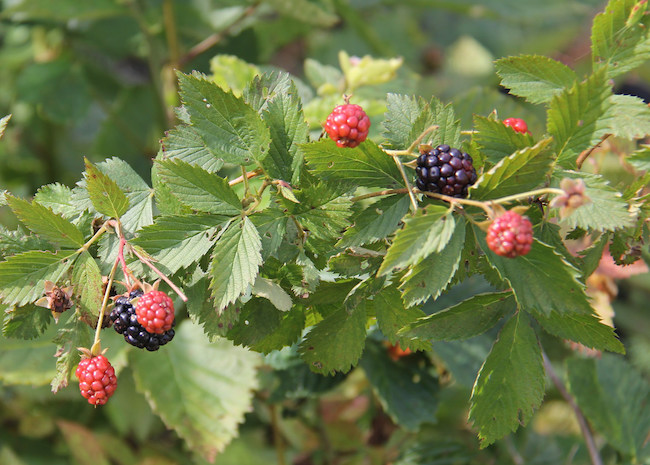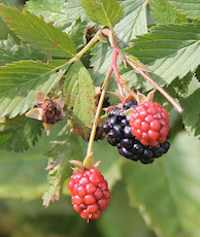At one time, an almost unlimited number of wild blackberries and dewberries – the blackberry’s trailing cousin – grew along fencerows and in abandoned fields. Many of these sites have been destroyed or now have “No trespassing” signs posted on them, but each spring I still see couples on roadsides picking berries.
Fortunately, breeding programs across the Southeast are producing larger blackberries than those growing in the wild. And they are fairly easy for home gardeners to grow. Some cultivars that work well in Georgia are 'Natchez,' 'Kiowa,' 'Arapaho' and 'Navaho.'
Blackberries can grow in a wide variety of soils and tolerate clay when soil pH is around 6.0 to 6.5. Make sure you plant them in a site where they will get plenty of sunlight to encourage fruiting.
Blackberries should be planted in late February and early March. If properly cared for, 15 plants will supply enough berries for an average family. To create a hedgerow of blackberries, plant cuttings or plants 2 to 4 feet apart in the row. If you want to keep the plants separated, plant them 8 feet apart in the row.
Set the root cuttings horizontally 2 inches below the soil surface. If plants are used, plant them with the root system approximately 2 inches below the soil line. Do not fertilize at this time; wait until a drenching rain settles the soil. If more than one row is to be planted, plant the rows 12 feet apart.
Plants need water to produce big berries. When possible, install plants near a water source in case irrigation is needed. When watering, apply enough water to wet the soil at least 8 to 10 inches below the ground surface, but do not plant berry plants in low areas where water stands after a heavy rain. Blackberries under these conditions would have a tough time growing.
University of Georgia Cooperative Extension recommends fertilizing blackberries twice a year. Apply about 2 ounces of 10-10-10 premium-grade fertilizer containing micronutrients to trailing blackberries in April and July of the first year. Scatter the fertilizer evenly over a circle 2 feet in diameter centered on the plant. Erect blackberries are usually planted closer together, so apply 1 pound of 10-10-10 fertilizer per 18 feet of row in April and 1 pound per 36 feet of row in June.
In subsequent years, apply 1 pound of 10-10-10 fertilizer per 9 feet of row in February or early March and 1 pound of 10-10-10 fertilizer per 18 feet of row in June. Spread the fertilizer evenly over the row in a band 2 feet wide. (To customize your fertilizer applications, take a soil sample to your local UGA Extension office.)
A few diseases affect blackberries, but if you fertilize properly, train the canes and use proper sanitation when you prune, diseases should be kept at a minimum.
Blackberries are ripe and at their peak flavor when they lose their high-glossy shine and turn slightly dull. The best time to harvest berries is in the late morning hours after the dew has dried. This is generally when the berries are at their juiciest.
Depending on the weather, picking season runs from mid-June through July 4. You can easily extend the picking season by planting a variety of cultivars with different harvest times.








